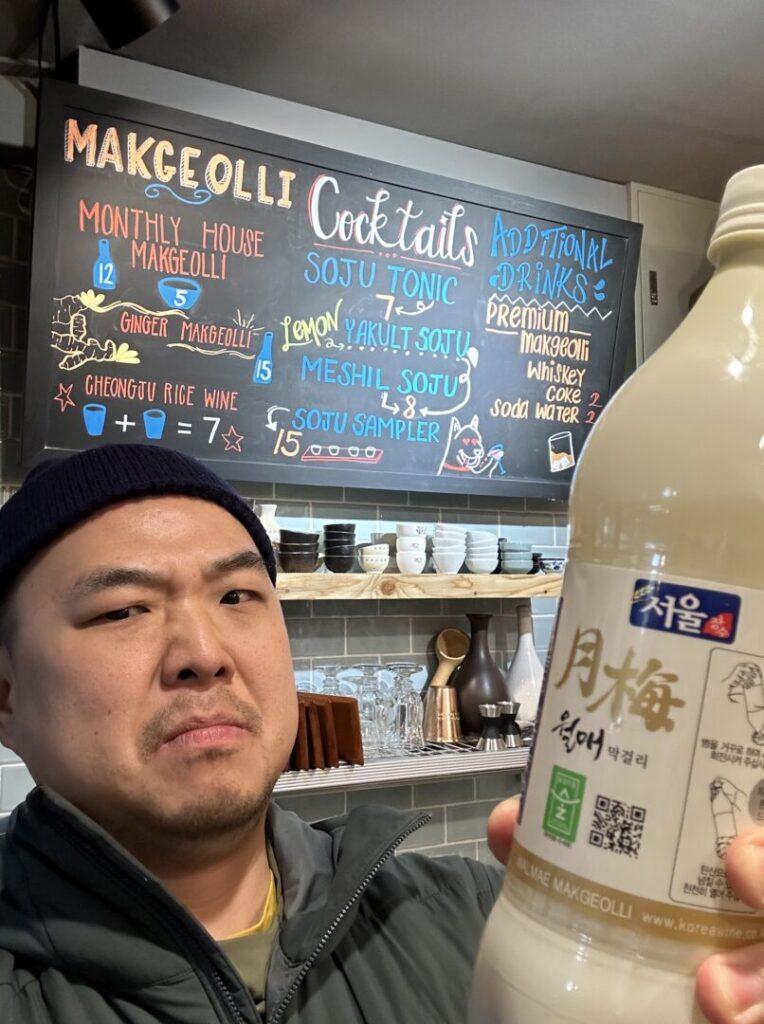
In your first visit to Seoul, you’ll run into a convenience store and perhaps if you are thirsty and reach for the beer section then you’ll find some Soju from a green or blue bottle that you might recognize, and most likely next to it, you’ll see some Makgeolli.
Now we have a full article on the types and categories of Makgeolli that you can enjoy and even the different places around Seoul where you can find a more variety of Makgeolli. That’s right, not all places will have the same type of Makgeolli, so make sure to check out that article.
Now, depending on where you go to enjoy Makgeolli, or the menu that you’ll find, for the most part, many of the establishments won’t have much detailed information. So how is this article will help you understand Makgeolli better?
I highly advise going to some Korean alcohol bottleshops, most of the owners of these establishments including us Baekusaeng Makgeolli are run by Makgeolli fans and Traditional Alcohol Sommeliers who will help you explain the different flavors and tastes.
You can download our list of favorite bottleshops around hot spots in the Seoul and surrounding areas, and see the Maklgeollio bottles for yourself in person and know a little bit more from them,.
Now these couple of signs won’t guarantee you’ll have the perfect Makgeolli that you like, but you’ll have a better idea of its value and recognition.



In some Makgeolli bottles you’ll find 2 types of Seal, labeled 술 (Sool).
The first one is Gold, which means that the ingredients for this Makgeolli are being sourced from Korea and locally.
Now, does that really guarantee a quality and difference in taste?
Not really, but for many consumer products such as meat, poultry, fish and kimchi , a lot of Korean people like to know where it actually comes from.
When the same seal is green, then it means that the ingredients have been sourced from overseas.
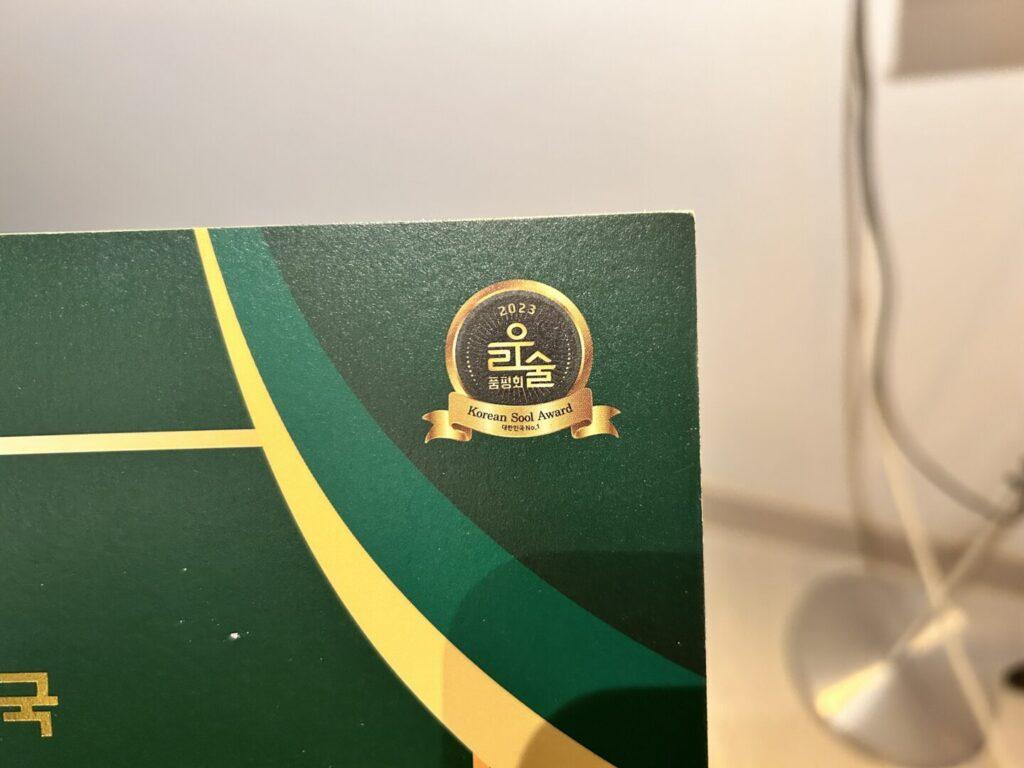
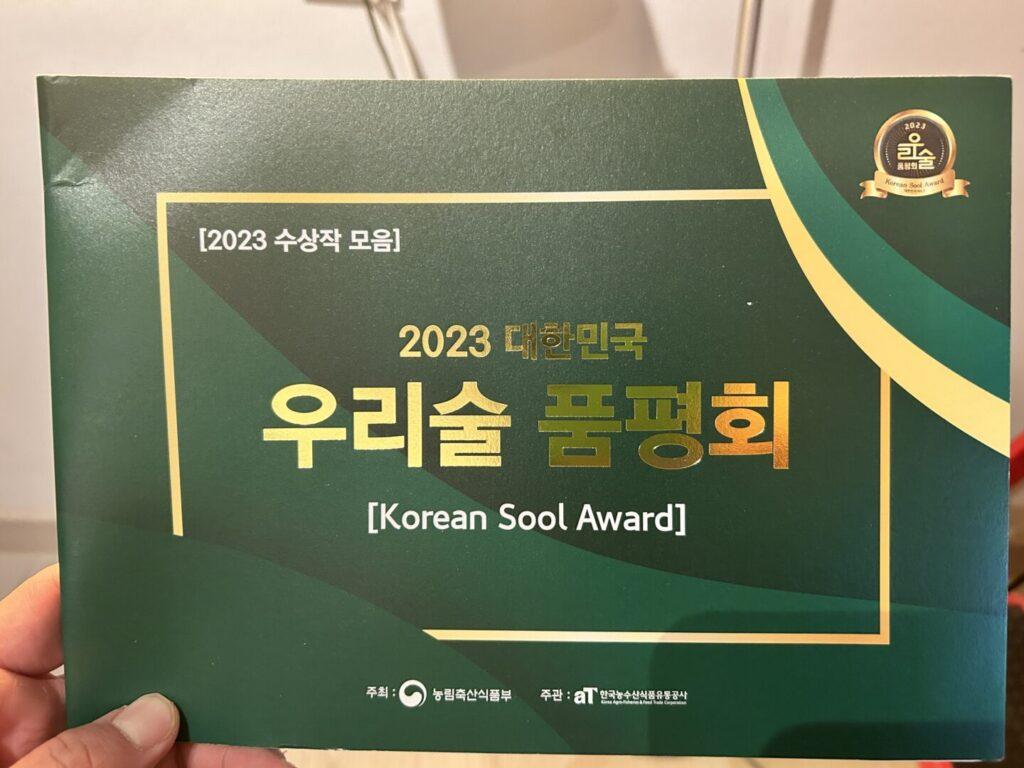

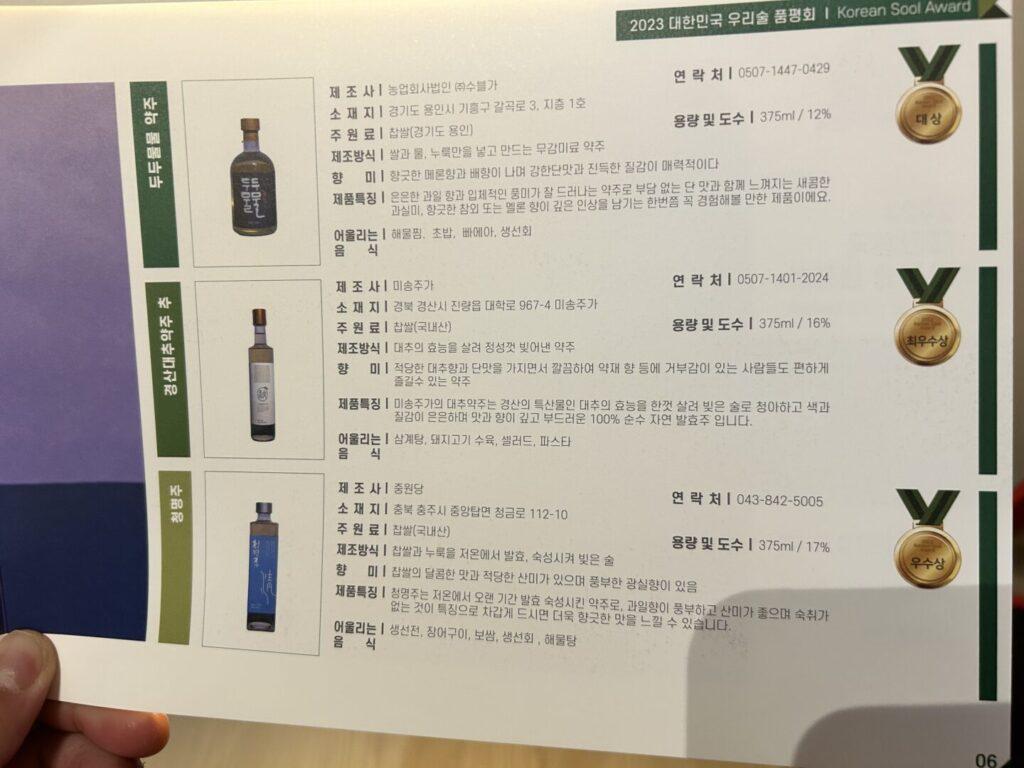


This is a nationally recognized liquor competition where the Ministry of Agriculture, Food and Rural Affairs and the Korea Agro-Fisheries and Food Trade Corporation select and award excellent products every year to improve the quality and strengthen the competitiveness of Korean liquor.
The Korea Korean Liquor Competition, which started in 2010, selects the grand prize, grand prize, and 3 excellence prizes for each category in a total of 5 categories (takju, yakcheongju, distilled liquor, fruit wine, and other alcoholic beverages), for a total of 15 items, and among the grand prizes in each category, After screening, one Presidential Award will be selected.
Various promotional activities are carried out for the winning products.
It refers to alcohol made using brewing methods that have been passed down from the past in a country or region, and is made by inheriting and preserving traditional brewing methods.
It can be defined as a drink that reflects the emotions and times of Korea and contains the lifestyle, history, and culture of the past.
Now, does that really guarantee a quality and difference in taste?
Not really, but for many consumer products such as meat, poultry, fish and kimchi , a lot of Korean people like to know where it actually comes from.
When the same seal is green, then it means that the ingredients have been sourced from overseas.



Every year, the Korean Wine and Spirits Award sets out on a mission to uncover the finest local spirits and foster a wholesome drinking culture. In 2023, this prestigious event celebrated its 10th anniversary, boasting a record-breaking participation of 1,004 brands from 185 companies.
Among these entries, a noteworthy 413 brands—making up 40% of the submissions—earned well-deserved awards. Notably, 23 brands, securing the highest scores in their respective categories, were proudly crowned as the ‘Best of 2023.’
The meticulous selection process involved specialized tastings with over 90 industry experts, professionals, and sommeliers serving as discerning judges.
Each year, the judges face the challenging task of evaluating a diverse array of entries, emphasizing the difficulty due to the consistently high overall quality. Their preferences lean towards traditional spirits with a clean and robust profile, showcasing the commitment to recognizing excellence in the realm of local beverages.
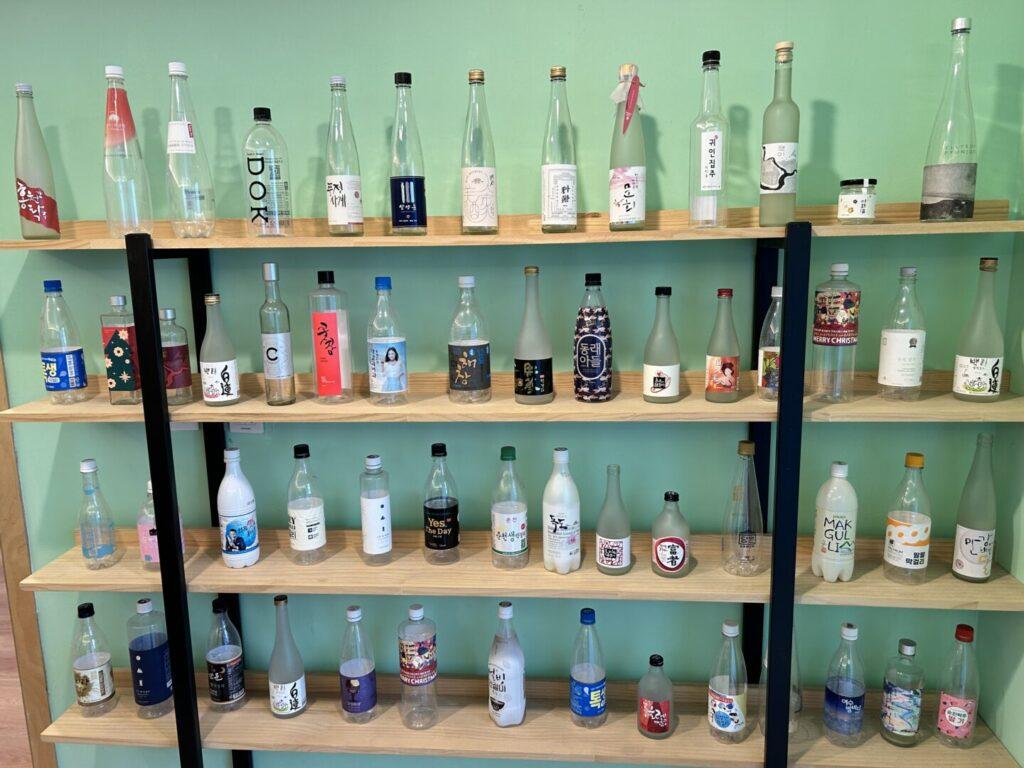

Do these seals have a tremendous impact and guarantee a good taste of Makgeolli? Not really, as you can see from the picture some of the cheap manufactured aspartatme Makgeolli have couple of these seals.
If there’s a certain Makgeolli I like, and I see the gold seal showing the quality of ingredients resourced from Korea, it just puts a bit more credibility towards the brewery.
The President Award liquor competition is definitely a more credible seal, but sometimes I can be very biased, especially with the Makgeolli / Takju price awarded this year. Awards like these are not just based on the merit of taste but there are different variables as well. If the award was based on the best tasting Makgeolli, there would be other clear winners in 2023’s results.
As a Makgeolli brewery owner, and Korean Traditional Sommelier, and above all a Korean alcohol fan, it’s a good resource to check what new products have been coming out, and that’s a good representation for the Korean Awards and Spirits seal. Every year they pick what’s called their 23 bests, but in now way Cass beer and Jinro Soju would be the best. This just shows how the awards are based primarly on sales, and other factors beyond taste.
